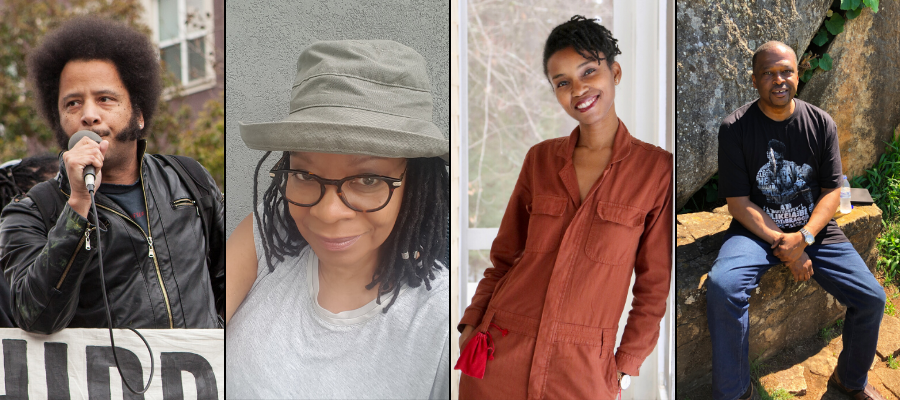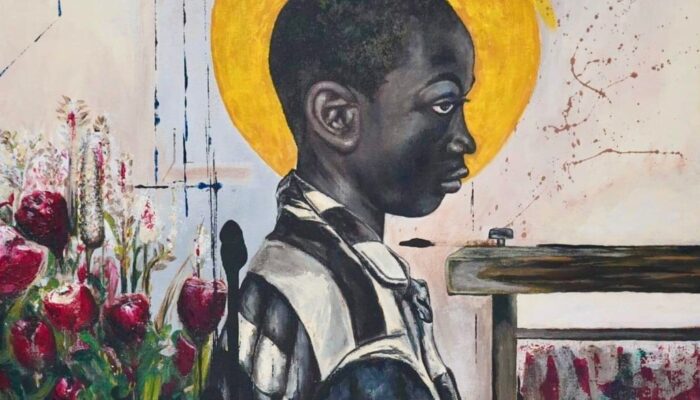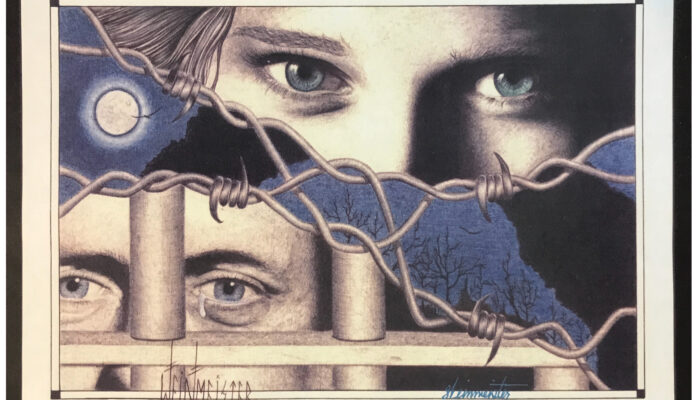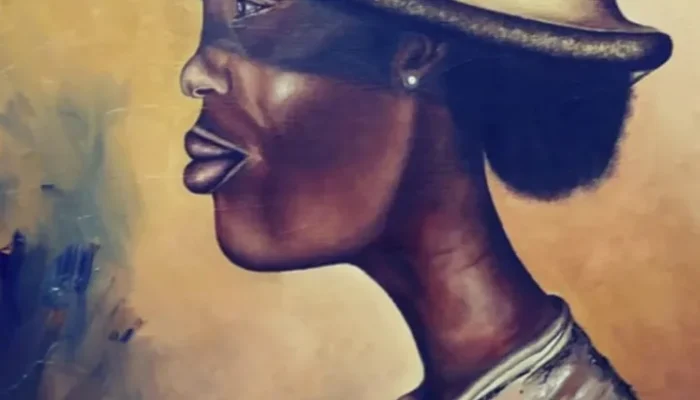A Conversation with Boots Riley, Opal Moore, Kyla Marshell, and Jeffery Renard Allen
What is AfroSurrealism? In Black, Brown, and Beige, Franklin Rosemont and Robin D.G. Kelley argue for Surrealism as embodying a “barbed and bitter humor. . . against White supremacy.” Rickey Vincent’s Party Music: The Inside Story of the Black Panthers’ Band and How Black Power Transformed Soul Music examines how pleasure—what’s sprouted in our music and art—is connected to the struggle.
What’s behind the growing movement? Students from AfroSurrealism classes at Sarah Lawrence College and Fisk University spoke to four innovative writers about their work and process: filmmaker and musician Boots Riley, poet Opal Moore (who participated via online chat), poet Kyla Marshell, and fiction writer and poet Jeffery Renard Allen. Their writing was part of the 2019 course, which also included lengthy discussions on the AfroSurreal, a hypnagogic sleep writing session, a community exquisite corpse, and a visit to the Toni Morrison tribute held at St. John’s Cathedral on November 21.
— Rochelle Spencer, author of AfroSurrealism: The African Diaspora’s Surrealist Fiction
Laura Wang, Rochelle Spencer, Jaydon Roberson, Brianna Rice, Katie Kopacz, and Dani Bormes posed the questions that follow. They were participants in AfroSurrealism classes during the fall of 2019.
Question: We noticed all of you infuse humor (and irony) into your work. As writers, how do you view humor operating in your work?
Boots Riley: Humor is exaggerating or highlighting contradictions, deciding that here are the ones that are important. Irony points out a contradiction; it’s the basis of both tragedy and comedy. For me, it’s hard to write something that doesn’t have comedy. All the songs I’ve ever written, no matter the subject, will have lines in it that are funny. The humor developed when pointing out these contradictions.
Jeffery Renard Allen: I’ll make reference to the Langston Hughes’s novel Not Without Laughter. Life always has those two sides; even a tragedy has humor.
Opal Moore: I had never thought about humor in any writerly way until James Alan McPherson told me, “If you can’t find humor in life, in whatever you’re writing about, then you’re not paying attention.” He said it rather emphatically. I was a workshop student at the time and I never forgot it. Once he said it, it seemed obvious. Humor does a lot of work in our lives. As Richard Pryor put it, on his way to prison, “I was determined to keep those n—–s laughing!”
Kyla Marshell: My background is in poetry. I don’t know how comediennes think, but what’s funny is the connection between the punchline and a beautiful poetic line. It seems really clear and obvious to me. So much of humor is connected to choosing the right words and the right language. Language changes the way the audience experiences a moment even if they haven’t experienced it.
In my everyday life, humor is important. To me, things have multiple sides, things that are serious and funny at the same time or start off one way and end another. [Amy] Winehouse and Parliament—Winehouse had songs, if you didn’t hear the lyrics, you’d think she was singing sappy love songs. With Parliament, I appreciate that so much of their music is playful, playful, and then back to serious. Life is not all serious or all funny. I’m drawn to things that have multiple textures and colors, and that echoes how I am as a person. My work is in all kinds of vibes.
BR: Just met Tracey Morgan the other day. Within three minutes of meeting him, he said, “People think I’m funny, but I’m sad. My brother had cerebral palsy so I was funny so people wouldn’t pay attention to him. I try to be funny so I wouldn’t have a job at Walmart but then got hit by a Walmart truck. Resent me by giving me a kidney!” He was being sincere. He knew that it was funny. He knew that those contradictions were the sad thing and, unfortunately, the hilarious things that we miss.
Q: I’m a fiction major. One of the things we were talking about was the placement of surreal moments in stories. I wonder about the utility of that as a writer, how as writers you decide where to place the surreal moment?
BR: It’s easier for me to not rule out many tools. This sort of approach would give me that. On a first or second pass, there are things—especially in film—so much of what we do is actually surreal. Somebody parks in front of a place, and then they’re in that place: how did they get there? Or someone isn’t drunk at party, and then we show them drunk in a party. We’re showing what’s in someone’s mind, what they’re thinking. We call storytelling techniques that we don’t see surreal. By doing that, we miss what’s actually happening in our brains.
I just try to embrace anything that can put two ideas on top of each other. I look for other ways visually to do that. I look for new ways to talk about large ideas, to make you aware of the ideas without having to have exposition about it. We meet somebody and have all sorts of questions about them, connections with other experiences we’ve had. We have somebody say, “You remind me of your mother.” We have these unnatural dialogues in our work because we’re trying to explain somebody’s feelings. You meet this character, and they tell you everything about themselves. I want to have something that represents how somebody is feeling about a thing. For me, that’s doing it visually and looking for things that don’t always connect.
JRA: I’ll pick up on something Boots just said. In terms of exposition, I always find that I tend to avoid exposition because it doesn’t feel natural to me in terms of how we encounter the world. You don’t think, That person is 45 and six feet tall. It doesn’t feel natural to the way we encounter the world. I tend to avoid conventions that sound like convention.
I try to write from inside of a character. I often tell students to “write in the moment.” I write what people call “magical realism,” but I don’t characterize narrative in that way. I don’t become deliberate. I hate the term really. I’ve had discussions—a narrative can have many levels of reality. You can go from one thing to another. What should happen next should be the most interesting thing.
KM: I’ve had a lot of conversations about Surrealism. I wouldn’t have thought my poem was surreal. So much of my writing is based in reality. Most of my poetry is drawn from my own experiences. It felt subversive to me. In terms of creating a surreal world, I guess it feels subversive as a Black writer to write about something that’s related to my life or struggle, the idea of writing things that aren’t based in reality. That’s the place where I am sometimes writing.
OM: André Breton said about the surreal that renunciation is difficult. He also said that the surreal deals with contradictions between dreams and reality. I’m sure I did not know Breton’s thinking when I wrote “A Happy Story.” But the story flirts with renunciation and builds layers of contradiction. It toys with the possibility of the renunciation of sacred cows such as marriage as a woman’s fulfillment, social conformity, religion, gratitude, and words like “happiness” and “sacrifice.” In “A Happy Story,” dreams are moments of the surreal. Sacred cows are slain with tonal irony and silence. (We did not talk about silence as a tool of humor.)
Q: How do we write about remaining human, just being ourselves, in dehumanizing situations? How do we write these stories without being didactic?
OM: A story can become didactic when the writer sets forth to deliver an answer, a profundity, a wisdom. Clichés lurk there! Writing can be a process of questioning, discovery, observation. There should be the possibility of surprise—for the writer, I mean, and possibly the reader.
BR: When I made my first album with The Coup, a lot of it was signifying the ideas I was able to. It was a lot of name dropping. It signified to people who already agreed with me: these are the ideas, this is the realm I’m in. People liked it. In hip-hop, that’s what people are doing: I’m in this group, identifying with this. I could see how people were relating to the work or not relating to the work.
I made a rule I wouldn’t use certain terms—used the term “communism” once but didn’t use “capitalism” at all. The album was a pamphlet on vinyl. I took what I learned. The art was part of a mass movement, of connecting to modes of thought and considering whether people had any chance of being part of changing things. All those sorts of things and questions came up. The main question: do I have a way to change things? is there a pathway? That optimism is what got people involved.
I started writing things more from the inside out. I had to trust that I had been involved with stuff, and if I talked about it from the small aspect of life, and as long as I was being true to everything along the way, my ideas would come out into the work. So we got accused of having stopped making “political” work. “Wear Clean Drawers” and “I Just Wanna Lay All Day” —things that were connected to getting people to see the connections of their daily life to a larger system. I had to write whole essays just for one song.
Because I get away from that. Being in a certain style of art, being in conversation with others who have the same style. Lyricism is considered shallow word play; it doesn’t have an emotion, it’s just about being clever. Have something that felt more real and that, for me, circled around to being in touch. When I wrote Sorry to Bother You: what were the characters feeling? what did they say? We inhaled so much art especially.
When you’re writing dialogue, so much of it is what you heard. You’re more likely to write a break-up scene than transcribe or interrogate what surprises you or makes you go off to the side. Opal said good writing is “being capable of being surprised.” You end up taking these detours of thoughts. So much of your time, you’re talking about these larger ideas: being dehumanized, an economic or political system. There are shortcuts we use to talk about this, and it seems to take longer to get to it. For me, the whole reason to make art is the humanity of it. Otherwise, I could do it in a speech. The humanity comes out in the little things in between. I guess that also goes to the Surrealism question as well; we’re painting all these colors.
JRA: I think art is about relationships. Always. As a writer, I’m thinking about how people relate to each other. That’s ultimately what we’re trying to learn from art. I feel like if a writer can write honestly about emotions, then that is a political act. One of the things Boots was saying is that reality is from things we know already. Trying to find a way to make sure my language is original or being honest or true to what people feel in situations is an act of being political.
We often complain that political art is didactic, but the greater problem is political art is co-opted. But it’s also a commercial object. What I’m trying to say is how political art can be co-opted, become an object to be sold. Can it be sold? Does that make any sense?
OM: I would say that writers do well to pursue the question of what is human. In that pursuit, writers challenge readers to question what they think they know about what is human and what is inhuman. Toni Morrison, early in her career, asked the question, “What is Black literature? What specific qualities make it so?” One quality was in how Black people embed acquired truths in our sayings and stories. In Beloved, she takes a well-known “Black” expression—“I brought you into this world, and I can take you out”—and places it in a specific situation of duress. Her context is the moment between slavery and freedom: a Black mother on the run, weighing the costs of returning her children to slavery, especially her daughter, whom she names Beloved after she kills the child. Morrison is brutal in her pursuit of the question of what is human. And relentless. Just when you think you have answered the question of who is right and who is wrong, who is more or less human, Beloved crawls out of the water and returns to haunt her mother’s house. Every parent who has ever threatened a child’s life for some minor mischief may want to consider what it means to take it back, to assume such power over the helpless.
BR: It’s a little unfair. Opal is a genius.
The work seeming didactic—we don’t understand that we’re being taught ideas about certain things that aren’t considered political. When an artist puts it in their work, they’re just saying how the world is. They’re teaching us the way to think. You can say that about so many movies that are thought of as not didactic, but you hear that all the time. When someone is saying something that we hear all the time, we’re hyper-aware of it. Sometimes “didactic” is really just used to say something is done badly. There’s something else about it that says it’s not. I love something else about the music or the style; I’m cool with it. We’re going to watch that. We’re going to listen to that. Artists may not be as used to putting ideas into their work. They’re done in ways that work—need more practice in doing it.
KM: The ideas are Legos: there’s an artsy part, a moral part. Sometimes people are reverse-engineering, and there’s an idea or part that has to be there that is dropped in. That’s why the message gets lost. It’s almost like when you read things and there are typos: you’re distracted and can’t focus. People don’t want to be bothered by things that are political or challenging. But some things are coded as political and others are not. That happens in conversations: things that are for women, things that are for men, only women have families or only women are in relationships with men. We decide that’s political or that’s not serious and that doesn’t count. People are throwing in those other pieces after the fact, not with those ideas in mind. Pry these ideas apart, and it becomes blaringly obvious that something feels different, and it sticks out and isn’t intertwined; but that’s Surrealism.
JRA: I can define AfroSurrealism with an example. I can be having a perfectly ordinary day and see an email asking, “Can I levitate?”
OM: Letting yourself be surprised—by the question and by the answer!
Q: Is Black identity more defined by what has been or what will be?
JRA: My two cents: this is probably a bone-headed idea, but in a lot of African culture, time exists in a continuum, with past/present/future occupying the same space. It’s like water. What has been and what is to come. Everything is equally important.
OM: Black identity has been prescribed and proscribed. Reading, writing, thinking, inventing, ballet, being beautiful without caveat, making poetry were once placed outside of Blackness. So, what will the next Black thing be—swimming?!
BR: When I look at Black identity, it’s something that’s always changing. There’s this interview that George Clinton did in 1996 in Rolling Stone, and Clinton was complaining that a lot of Black people called their music White. They’re talking about Blackness, but the music is considered White? Blues music was definitely Black. But then he threw out a charge in the same interview with musicians from Philadelphia—Teddy Pendergrass, LeVert, O Jays—and was saying that’s White music from the 50s. There’s some truth to that: the Civil Rights Movement is over with. “Ain’t no stopping us now”—we got leather seats in our cars. That was the epitome of Black culture, and it’s always changing based on what’s going on.
OM: Black identity is, of course, constructed, as is race. I think Jeff was right to remind us of African philosophy and simultaneous time—past, present, future occurring on different planes, parallel rather than in linear time. Black feelings and habits have changed expression in time. But those feelings are not “past.” They are still viable. Perhaps this is one aspect of that parallel plane.
I think now of the play Day of Absence. The play’s action is premised on the ubiquity of Black essential labor. That play would read differently today for Black viewers, as immigrants have taken over much of the lowest-paid labor and are the target of fresh anxiety over “labor competition.” Maybe Black identity will cease to be viewed as “performative” after a point—less about moonwalking and verbal mugging and cultural ephemera. Maybe identity discussions will, as in our literature, move to the interior. Living, as Boots writes, “from the inside out.” Surrealism may bend reality, but it does not close off the Future. What is “Black” in the Future? Is it remnant or new magic? Writers will be asking how change influences feeling. Octavia Butler concluded that acceptance of instability and change makes us more alert, more prepared, and perhaps more ruthless in our determination to live compassionately yet not without empathy.
Special thanks to Brian Morton, Paige Ackerson-Kiely, and the Graduate Creative Writing Program at Sarah Lawrence College and Holly Hamby and the English Department at Fisk University for facilitating this conversation.
Rochelle Spencer, Laura Wang, Jaydon Roberson, Brianna Rice, Katie Kopacz, and Dani Bormes are superstars and experts in AfroSurrealism.
Boots Riley is a rapper, producer, activist, author and director of Sorry to Bother You (2018).
Opal Moore is a poet, fiction writer and essayist, and author of Lot’s Daughters, a collection of poems. Her poems and stories appear in various journals and anthologies, including Honey Hush! An Anthology of African American Women’s Humor, Callaloo, Trouble & Hope: An Anthology of Poets in Performance and Conversation, The Notre Dame Review, and other places. She has published critical essays on American literature, including African American children’s books. Her essay, “Redefining the Art of Poetry,” appears in The Cambridge History of African American Literature. She currently serves on the board of The Art Section, an international journal of art and commentary, edited by Atlanta-based artist Deanna Sirlin.
Kyla Marshell is a creative writer whose poems, essays, articles and interviews have appeared in The Guardian, Gawker, BuzzFeed, Kinfolk, O, the Oprah Magazine and elsewhere. She has earned fellowships from Cave Canem, MacDowell Colony, the Jacob K. Javits program, and the Fine Arts Work Center. In 2013, Ebony.com named her one of “7 Young Black Writers You Should Know.” Kyla is currently at work on a memoir about a chance encounter with a distant relative which leads her to seek out other lost and hidden members of her family. A Spelman College and Sarah Lawrence graduate, she lives in New York.
Formerly Professor of Creative Writing at the University of Virginia, Jeffery Renard Allen is the author of five books, most recently the novel Song of the Shank, which is loosely based on the life of Blind Tom, a nineteenth-century African American piano virtuoso and composer. The novel was a finalist for the PEN/Faulkner Award. Allen has received numerous accolades for his work, including The Chicago Tribune’s Heartland Prize for Fiction, The Ernest J. Gaines Award for Literary Excellence, a grant in Innovative Literature from Creative Capital, a Whiting Writers’ Award, a Guggenheim fellowship, a Writing Fellowship at the Johannesburg Institute for Advanced Studies, a fellowship at the Schomburg Center at the New York Public Library, and a Bellagio Residency. He has widely published in numerous periodicals and journals, and he has lectured and taught workshops worldwide for Summer Literary Seminars, Kwani?, Farafina Writers’ Workshop, Kimbilio, Cave Canem, The Zora Neale Hurston/Richard Wright Foundation, Sewanee, and Disquiet International, among others. His collection of stories, Fat Time, will be published in 2021. He is presently at work on three books, the memoir Mother Wit, the essay collection Daywork: Reflections on Politics, Art, and Culture, and the novel Hour of the Seeds. He makes his home in Johannesburg.




